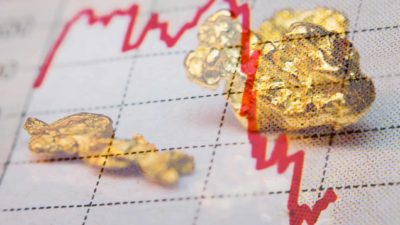The gold price continues its descent and now trades at its lowest mark in more than 52 weeks.
At the time of writing, gold is priced at US$1,710 per ounce, having dropped from a relatively short-lived relief rally on 12 August.
Returns for the precious metal for the last 12 months of trade are plotted on the chart below.

Can gold make a comeback?
Those invested in gold bullion have seen a volatile 12 months, watching their positions soar above US$2,000 per ounce in March only to contract heavily to today's prices.
Key to the volatility has been a combination of inflation data and shifting interest rates. Both have stemmed from a combination of COVID-19, central bank policies, and global supply chain headwinds.
Spurring the downturn has largely been a nasty combination of rising interest rates and a strong US dollar.
Both are seen as negatives for gold, as the yellow metal pays no interest or dividends (therefore, it comes with an opportunity cost) whereas the US dollar serves as the benchmark for pricing it.
Moreover, precious metals are often seen as a way to protect inflation-adjusted returns as one of the potential inflation hedges. Although, there's much debate on this topic.
Nevertheless, presuming this is the case, analysts at ICICI Bank Global Markets make a good point regarding this relationship.
"Given that gold is often used as an inflation hedge, the commitment from global central banks to rein in inflation is reducing the appeal for gold as an investment tool," they said.
Meaning lower inflation equals less utility for gold in investment portfolios.
Meanwhile, portfolio managers at investment bank Citi are equally as cautious on the outlook for the metal. According to an update in August:
Gold may also come under downward pressure as the Fed raises policy rates further, inflation decelerates, and the US dollar remains a beneficiary of global safe-haven flows.
However, gold may benefit if and when the Fed pivots to [quantitative] easing.
While this may take many months, the first signs of a US employment contraction could boost expectations of such a shift, benefiting safer bonds and gold.
Based on the prevailing commentary, it looks as if the outlook for gold is a rates-driven one. Although there are, of course, other factors weighing in.
For the time being, though, the slide in market pricing continues and traders have yet to show signs of major reversal.
The gold price is down 6% over the past 12 months, slightly ahead of the S&P/ASX 200 Index (ASX: XJO)'s loss of around 9%.








